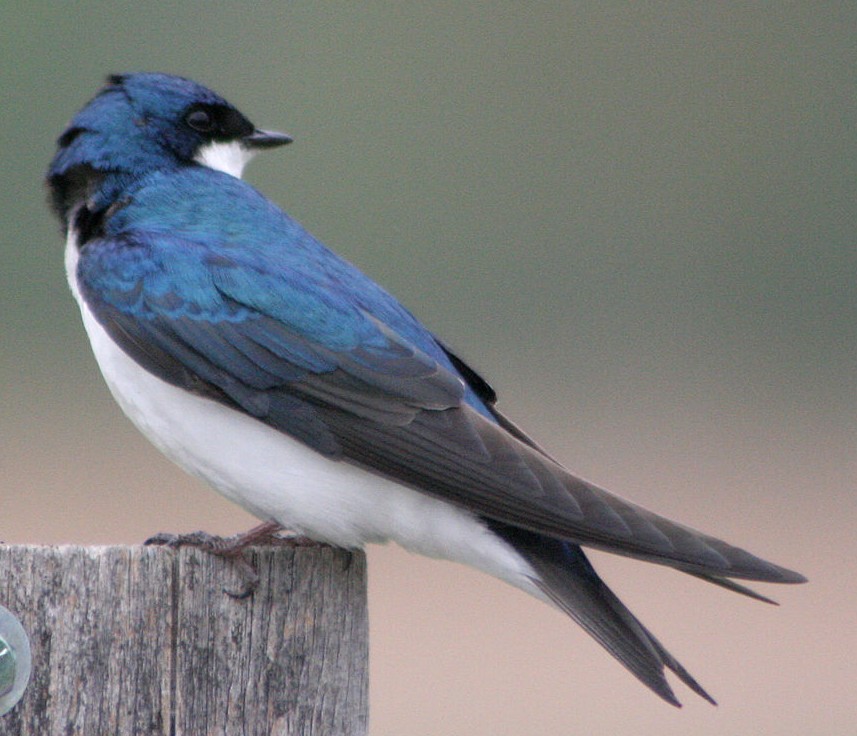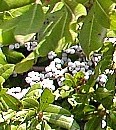 Don’t expect to see a lot of the swallow family feeding in your garden. They are birds of the sky and are not easily lured down to a backyard. This family, which includes swallows and martins, like flying insects and are adapted to flight and aerial feeding. They have streamlined bodies, long pointed wings, very small beaks, and mouths that open wide to collect flying insects. Many have dark coloring on their top side augmented by a green or blue iridescent sheen. They have a worldwide distribution and usually migrate in response to the insect supply. Bodies of water are especially attractive to the swallow family because of the huge number of insects there. A garden pond will probably not suffice as the swallow family needs a lot of room for flight.
Don’t expect to see a lot of the swallow family feeding in your garden. They are birds of the sky and are not easily lured down to a backyard. This family, which includes swallows and martins, like flying insects and are adapted to flight and aerial feeding. They have streamlined bodies, long pointed wings, very small beaks, and mouths that open wide to collect flying insects. Many have dark coloring on their top side augmented by a green or blue iridescent sheen. They have a worldwide distribution and usually migrate in response to the insect supply. Bodies of water are especially attractive to the swallow family because of the huge number of insects there. A garden pond will probably not suffice as the swallow family needs a lot of room for flight.
Providing flying insects for the high flying swallow family is a daunting prospsect but there are some rays of hope, especially if you like tree swallows.
Bayberry (Myrica pennsylvanica)
 This native of eastern North America is a evergreen to semi-evergreen shrub or small tree with aromatic foliage and waxy gray berries. Male and female flowers are produced in different plants and both genders must be present for the female flowers to produce berries. Tree swallows may dine on the berries during the spring, fall and winter, when insects are lacking.
This native of eastern North America is a evergreen to semi-evergreen shrub or small tree with aromatic foliage and waxy gray berries. Male and female flowers are produced in different plants and both genders must be present for the female flowers to produce berries. Tree swallows may dine on the berries during the spring, fall and winter, when insects are lacking.
Size: 5-10′ H
Site: full sun to part shade; average, dry to medium, well-drained, slightly acidic soil
Hardiness: Zones 3-6
Wax Myrtle (Myrica cerifera)
A native of southeastern US, this is a good alternative to bayberry for the South. Berries are pale blue and foliage is evergreen. Like  bayberry, both male and female plants are needed for berry production.
bayberry, both male and female plants are needed for berry production.
Size: 10-20′ H
Site: Full sun to part shade; infertile, dry to medium moist, well-drained soil; drought and salt tolerant
Hardiness: Zones 8-9
Providing houses for swallows and martins is another way to entice them into your garden. Both tree swallows and violet-green swallows will use nest boxes. Purple martins will use multi-compartment houses and gourds especially fitted out for them.
Photo credit Wikimedia Commons
